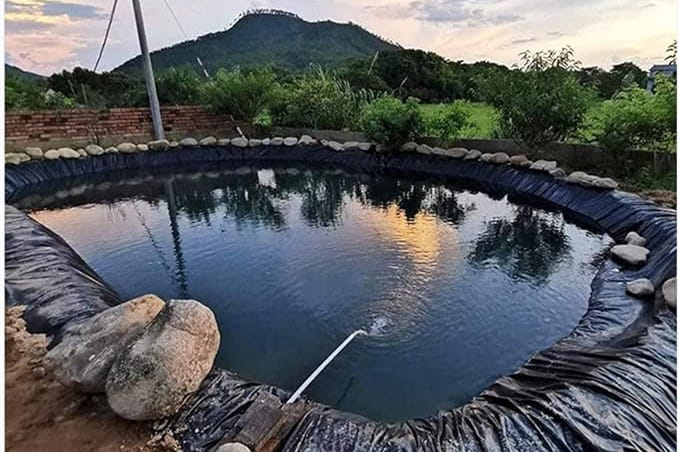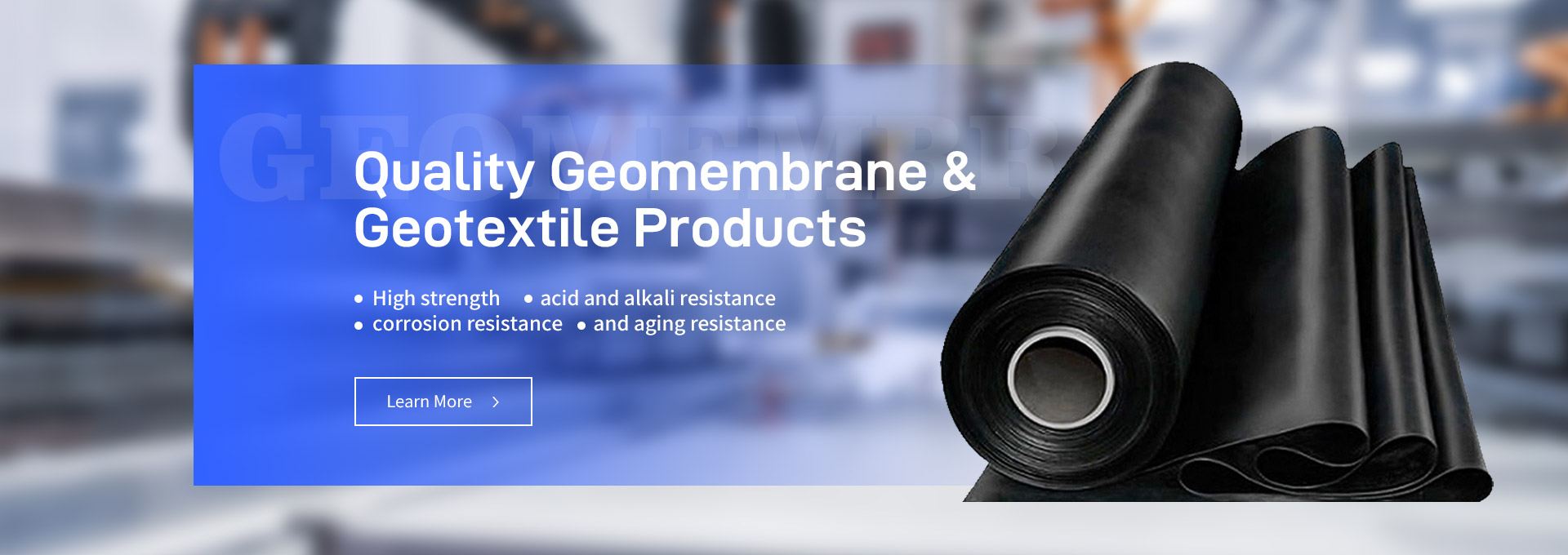With modern aquaculture technology advancing, more fish pond owners are using geomembrane to optimize their farming environment. But what exactly is a fish pond geomembrane? And why is it so important? In this article, we'll talk about how geomembrane improves fish pond management, why it’s essential for your pond, and the benefits it offers.

1. What is a Fish Pond Geomembrane?
A fish pond geomembrane is a specialized material used to prevent water leakage and maintain water stability. It's usually made from high-density polyethylene (HDPE) or low-density polyethylene (LDPE). These materials offer high tensile strength and excellent chemical resistance. Because geomembrane remains stable in various weather conditions, it’s widely used in aquaculture farms.
A. Material Features
The most common materials for geomembrane are HDPE and LDPE. HDPE is highly durable and resists UV radiation, oxidation, and chemical corrosion. This makes it perfect for ponds exposed to outdoor elements. The material's durability ensures long-term effectiveness, reducing the need for frequent maintenance or replacement.
B. Main Function
The main function of a geomembrane is to prevent water from leaking into the soil. Traditional earthen ponds lose water as the soil absorbs it. With geomembrane, water stays in the pond, preventing unnecessary loss and stabilizing the water body.
2. Why Does Your Pond Need Geomembrane?
Many people ask: Why does my fish pond need a geomembrane? The answer is simple: it offers long-term economic and environmental benefits far beyond just preventing water loss.
A. Save Water and Reduce Costs
One obvious benefit of using a geomembrane is water conservation. Traditional ponds require frequent refilling because water seeps into the soil. Geomembrane prevents this leakage, keeping water levels stable and significantly reducing water usage. For large fish farms, this translates to substantial water cost savings.
B. Improve Water Quality Management
A geomembrane doesn’t just save water—it helps improve water quality. Without geomembrane, water nutrients and harmful substances interact with soil, leading to contamination. A geomembrane keeps the water separate from the soil, maintaining a cleaner and healthier environment for fish.
C. Reduce Disease Risk
Soil in traditional ponds often harbors bacteria and parasites, which can enter the water and harm fish. A geomembrane creates a barrier between the soil and water, reducing the risk of disease transmission. This improves fish survival rates and boosts overall farm productivity.
D. Lower Maintenance and Management Costs
Without a geomembrane, earthen ponds require regular dredging and maintenance to remove accumulated waste and organic material. A geomembrane keeps the pond floor smooth and free of debris, making cleaning and maintenance easier. Lower maintenance needs also translate to lower costs.
3. Other Benefits of Geomembrane for Fish Ponds
Beyond water conservation and reduced maintenance, geomembrane offers additional benefits that can greatly enhance your fish farming operation.
A. Increase Farming Efficiency
By improving water conditions, a geomembrane allows you to increase fish density without worrying about water quality deterioration. Better water control leads to higher yields per pond, boosting overall farm efficiency and profits.
B. Extend Pond Lifespan
Traditional ponds degrade over time as soil erodes and becomes contaminated. Installing a geomembrane extends the life of your pond by protecting it from these environmental factors. The durable material ensures your pond remains functional for many years.
C. Adapt to Various Climates
Fish pond geomembrane works well in a wide range of climates, from hot summers to freezing winters. Its durability makes it suitable for use in extreme weather, giving it versatility across different farming environments.
4. How to Choose the Right Geomembrane for Your Pond
With the many benefits of using a geomembrane, how do you choose the right one? Here are the key factors to consider:
A. Material Choice
HDPE and LDPE are the most common geomembrane materials. HDPE offers high strength and is ideal for long-term, outdoor use. LDPE, with more flexibility, works well in ponds requiring greater adaptability. Choose based on your pond’s specific conditions and environmental needs.
B. Thickness
Geomembrane thickness typically ranges from 0.5mm to 2mm. Thicker geomembrane offers better puncture resistance and a longer lifespan. For ponds with sharp rocks or roots, opt for a thicker geomembrane to avoid damage. For simpler pond environments, a 0.75mm to 1mm thickness should suffice.
C. Installation Process
Proper installation of geomembrane is essential for long-term success. Professional installation ensures that the seams are securely joined to prevent leaks. Hiring experienced geomembrane manufacturers for installation is recommended to maximize the effectiveness of your investment.
5. Conclusion
A fish pond geomembrane is an essential tool for modern aquaculture. It helps conserve water, improves water quality, reduces disease risks, and lowers maintenance costs. Whether you manage a large fish farm or a small pond, a geomembrane will save you time, money, and effort.
Choosing the right geomembrane brings long-term economic returns and greater operational stability. If you're looking to improve your fish farming environment, consider investing in high-quality geomembrane. It’s a smart, sustainable solution for any fish pond owner.
Ready to enhance your fish pond? Explore options from trusted geomembrane manufacturers or buy geomembrane directly from us to ensure the best quality and performance.

